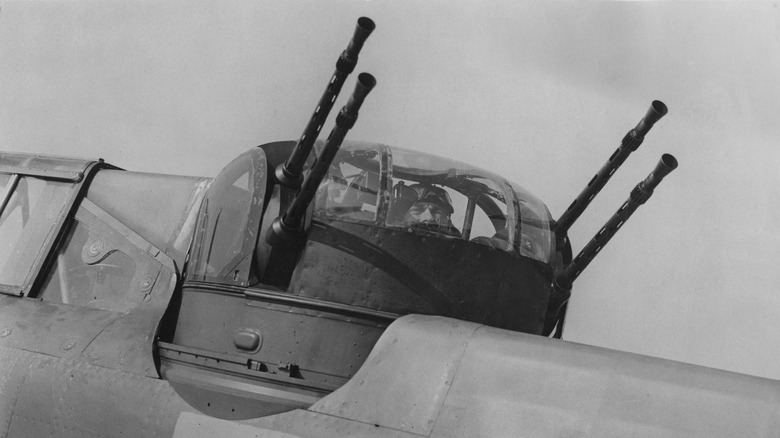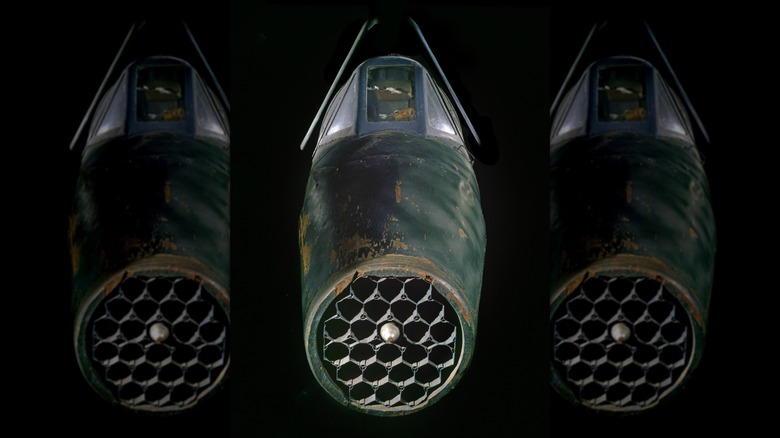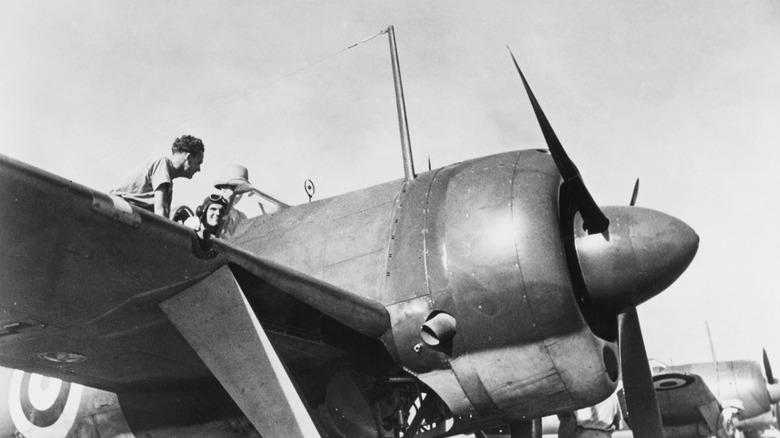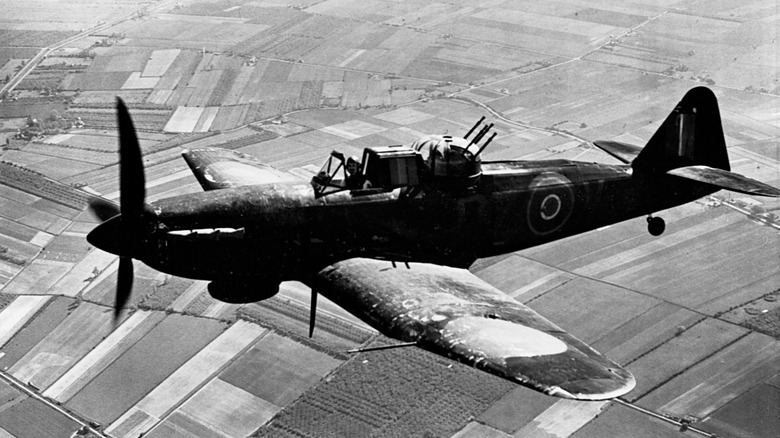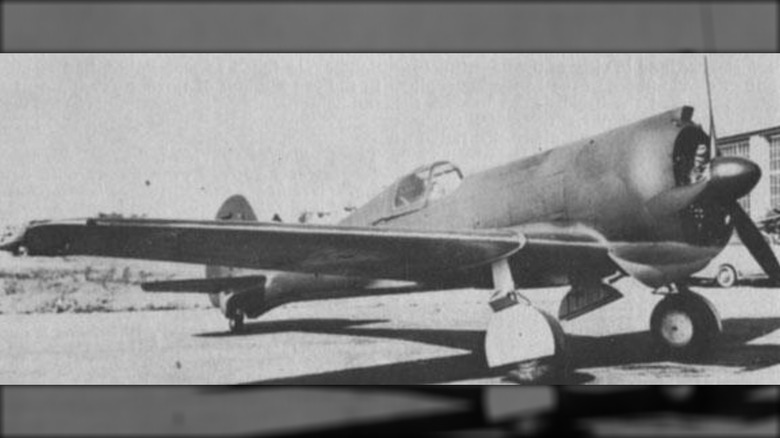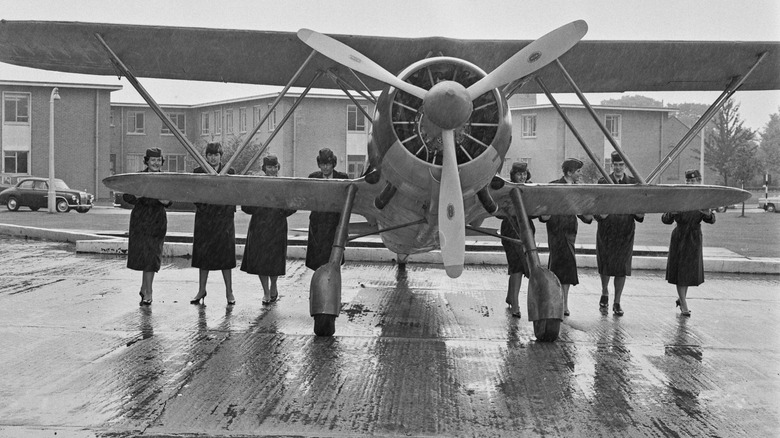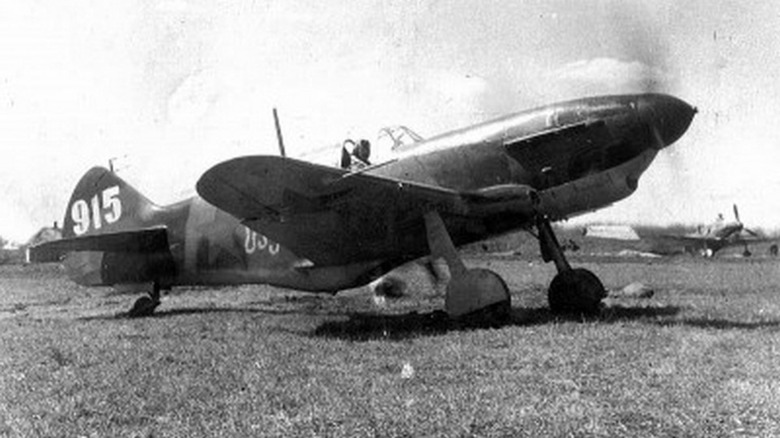The 6 Absolute Worst Fighter Planes That Existed During WWII
The widespread use of aircraft by both the Allies and Axis powers was one of the defining military developments of World War II. Air power had been deployed in World War I, with the new technology mainly used for reconnaissance before the emergence of the first dogfights (which began with pilots using pistols instead of mounted guns) and bombing raids. Yet these uses were limited compared to how planes would be used a quarter of a century later.
As aviation developed in leaps and bounds, the war saw the deployment of plane designs that, despite their relative simplicity, are today considered classics of design. The British Spitfire, the American P-51 Mustang, and the German Messerschmitt Bf 109 were all planes deployed to great effect in various World War II missions, and they continue to attract the attention of both military historians and aircraft enthusiasts. However, the need for innovative new models, the relative simplicity of the era's aerial technology, and the reality of material shortages due to the war also led to the development of designs that were misguided and downright dangerous for the people operating them. Here are the worst models that were deployed — or not — during World War II.
The Bachem Ba 349 Natter
As the stakes of World War II grew ever higher, both sides desperately attempted to gain the upper hand with the development of new technologies. In some cases, they became part of the weirdest missions of the conflict. The British, for example, attempted to pioneer a bizarre device nicknamed the "Panjandrum," which was basically a rocket-propelled set of wheels they believed would aid the Allies in beach landings. Unsurprisingly, it was never actually used in combat due to its dangerous unpredictability.
Rockets similarly featured in one of Nazi Germany's most experimental designs: The disastrous Bachem Ba 349 Natter. Tested in March 1945 as the tide of the war was turning decisively against Germany, the design was for a vertical-launching aircraft, which actually looks more like a rocket to the modern eye. The idea was for the Natter to quickly intercept enemy bombers, having the ability to launch to the right altitude far quicker than traditional fighter planes. After launching into the air, the pilot was instructed to take the controls, launch all of the Natter's ammo at the attacking plane, and then eject and parachute back to earth.
But the first manned test was a disaster. Shortly after launching, the vessel, which was partially made from plywood, lost control, perhaps due to the pilot being knocked unconscious by the cockpit flap. It crashed into the ground, killing them and ending the Natter experiment.
The Brewster F2A Buffalo
Aviation was advancing rapidly in the years prior to World War II, with militaries around the world looking to replace early biplanes — those with two sets of wings — with improved two-wing models. In the United States, the relatively small Brewster company was tasked with developing a new plane for the Navy, a project that began in 1935.
The result was the Brewster F2A Buffalo, a weighty model that proved to be slow and difficult to pilot. After the Navy responded to the design with only a limited number of orders, many of the planes wound up being used by the Finnish Air Force, which successfully used them against the Soviets. Today, though, historians believe that their success may have been down to the poor training of the Soviet air combatants.
As aerial combat continued to be decisive and the technology underpinning dogfights came on in leaps and bounds, the Buffalo was thought to require several key modifications to be of use to the Allies. But these modifications made the model even heavier, reducing speed at a time when the ability to dodge enemy fire was paramount. With the Buffalo's engine also liable to overheat, it was deemed unsuitable for combat against the German Luftwaffe, and they were at a serious disadvantage when they engaged with Japanese planes.
The Boulton Paul Defiant
The Battle of Britain, which took place in the skies over southern England in summer and fall 1940, was one of the most important flashpoints of World War II. It was also one of the high water marks of aviation in terms of skill and technology during the conflict. Fewer than 3,000 British fighter pilots took their lives in their hands and used their extraordinary expertise to fight off the highly drilled Luftwaffe squadrons with incredible success. It also convinced Nazi leader Adolf Hitler to indefinitely delay his planned invasion of the United Kingdom, Operation Sealion.
The Battle of Britain saw advanced British fighter planes such as the Spitfire and the Hurricane face off against the Nazis' best designs, including the Messerschmitt Bf 109 and the Junkers Ju 87. Not all those involved in the combat were successful, though. Among the planes deployed was the Boulton Paul Defiant, an initially effective model with rear-firing guns that resembled the Hurricane and often caught chasing enemy pilots unaware. Eventually, the Luftwaffe learned that the Defiant had no defense from full-frontal attacks or those from below and began destroying them in large numbers amid daylight engagements. Gunners were also typically unable to escape the turret. The Defiant was later used for night combat and as a sea rescue support vehicle.
The Curtiss-Wright CW-21 Demon
First flown in 1938, the American-made Curtiss-Wright CW-21 Demon was initially thought to be an optimistic new lightweight model that could contribute to Allied air superiority throughout World War II. Though metal was included in its design, it was made of the most low-weight materials possible, with the intention of the Demon being fast, agile in the face of attack, and able to ascend and descend altitude with necessary speed. The lightness of material used in the Demon also meant that it was budget friendly, which saw it exported to the Chinese Air Force for use in battles over the Pacific against the Japanese. The aircraft was also used by the Dutch East Indies.
However, the Demon's lightweight design required it to skimp on defense. The cockpit had virtually no armor, meaning injury to the pilot was common, while the unprotected fuel tanks were liable to explode instantly under enemy fire. Despite its early promise, the Demon failed to find an effective use during World War II, and only 62 were ever produced.
The Fiat CR.42 Falco
The Italian-built CR.42 Falco was unusual in being a biplane that received heavy deployment in World War II after being introduced to the Royal Italian Air Force in 1939. Pilots reportedly enjoyed the experience of flying the Falco, which was renowned for its maneuverability thanks to its shorter lower wings. The model was introduced to combat during the final months of the Battle of Britain, with Italy's Benito Mussolini sending hundreds of the planes to fight alongside Germany's Luftwaffe.
Despite being more agile in the air than the British Spitfire or Hurricane, the Falco eventually showed itself to be woefully outdated during the Battle of Britain. As well as being outgunned by the next generation of monoplanes, the Falco also had less armor. As strange as it sounds today, parts of the plane were covered in fabric rather than metal. Early successes against the French Air Force had given the Italian air command the impression that the Falco was on a par with the Allied models, but it was quickly retired from deployment against the British.
The Lavochkin-Gorbunov-Gudkov LaGG-3
In 1941, Nazi Germany made the shock strategic decision to invade the Soviet Union, launching Operation Barbarossa in an attempt to capture Moscow and knock the power out of World War II. Adolf Hitler reportedly believed that the USSR was a paper tiger that would fall under the slightest military pressure. That proved not to be the case, with Operation Barbarossa proving to be one of the deadliest and most disastrous campaigns of World War II. Nevertheless, the USSR was caught unawares by the Nazi aggression and found itself having to rush out aircraft to defend against Luftwaffe attacks.
The result was the mass production of the Lavochkin-Gorbunov-Gudkov LaGG-3, a slow, heavy, and underpowered plane that also suffered from serious quality control issues due to the speed at which the models were being made. It was no match against German Messerschmitts, which carved the LaGG-3's wooden fuselages open with ease and outperformed the Soviet plane in both top speed and climbing ability. The LaGG-3, which was named after its three principal designers, came to be considered such a deathtrap that Soviet pilots said its initialism actually stood for "Lakirovanny Garantirovanny Grob," or the "Varnished Guaranteed Coffin." After countless modifications, the model was eventually replaced by an upgrade, the LaGG-5, which performed far better.
